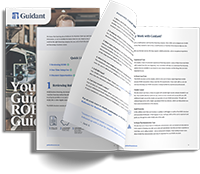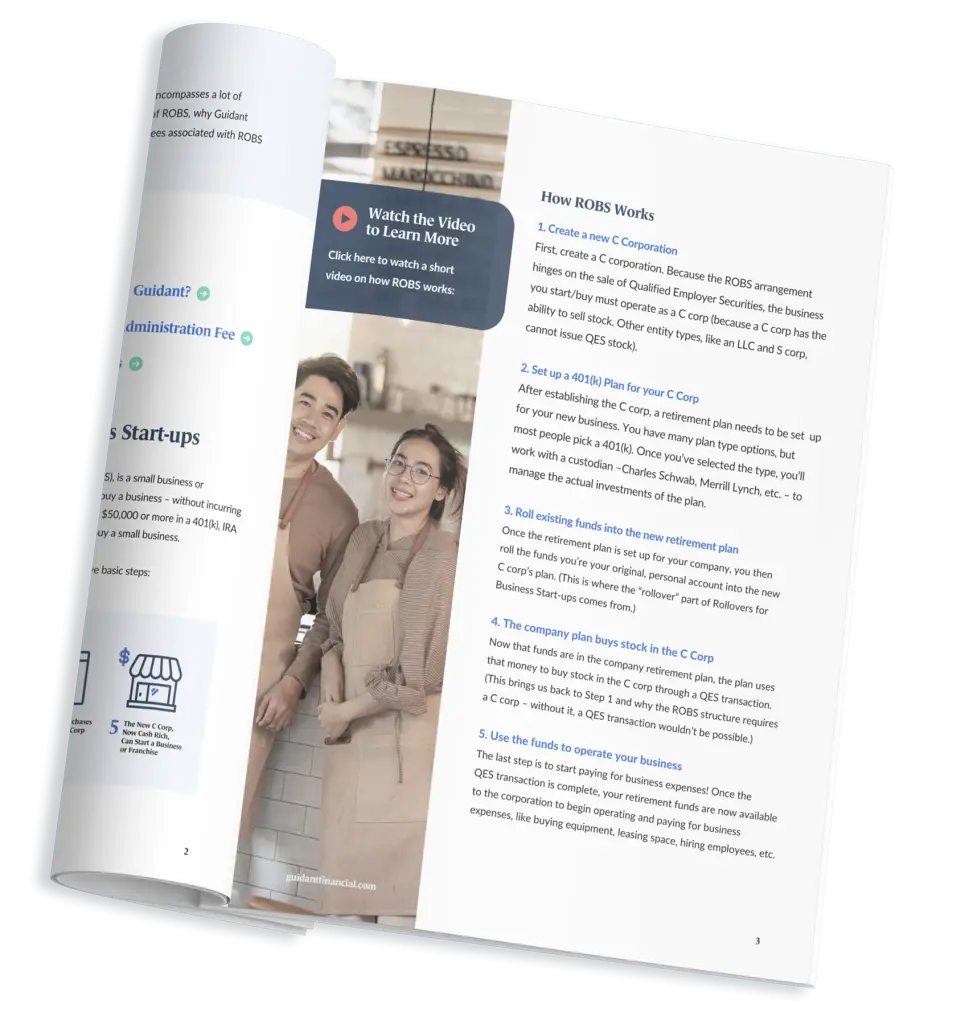If you’re a small business owner, you’re responsible for a wide range of administrative tasks that fall outside of your actual business or service. For this guide, we’ll focus on human resources (HR), and show you exactly how you can set up HR for small businesses.
Maybe you have current employees, or maybe you’re embarking on a hiring process or going to perform your HR tasks yourself. Whichever path you choose, this helpful guide will help you set up an HR system quickly and easily that can help you define your company culture, scale to your future growth, pay and help develop your valuable employees, and keep you compliant.
Start by Identifying Standard HR Processes
It can be overwhelming to think about starting a whole department when you’re not experienced in every area, such as HR. Rest assured, you can do it by breaking down the necessary company policies into manageable steps. The first step is always the hardest, but we’ve done it for you below.
1. Recruitment/Onboarding
Before you hire any employees, it’s best to have a process that allows you to do so equitably and fairly. Put an emphasis on diversity in your hiring and ensure your interview methods are adaptable to everyone. Start employee files the minute you hire so you can gather all applicable documents in one place.
Here’s what’s next:
- Write up a job description. Base the description on your marketing and business operations plans. Don’t have a business plan? Better late than never; you can use this article with an outline to get started.
- Determine the hiring criteria and benefits. How many years of experience will the position require? What level of education? How much will you pay the person in salary? WIll you include commuter benefits in your employee compensation? How about retirement plans such as a 401(k)?
- Develop an interview questionnaire. Possible questions include: why do you want to work here? What are your qualifications? What are your top three strengths? Using this standard list for everyone will help ensure a fair process.
- Post your job online. Indeed, LinkedIn or Glassdoor are just a few starting options. You should also post on your website and consider an online newspaper in your town. Once you’ve posted your job description, you can link to it from your various social media accounts to advertise that way, too.
- Create an employee handbook. A handbook with rules eliminates confusion and helps safeguard you in the unlikely event you need to let an employee go. For instance, disciplinary actions should be listed so that if that need becomes necessary, the employee can see it all clearly in the employee handbook. It also helps you define the rules of employment with your business and stick with them. These rules also help define your company culture and help you address any employee concerns. You can include information on employee evaluation programs (more on this in the performance section) and outline employee attendance requirements. You want your employees to have a positive employee experience so take the time to detail it all in a custom employee handbook.
Did you find a candidate that would be a fit for your role and with your company? Congratulations! Once you’ve completed any background checks (if you’re interested in going that route), now you can get your new employee set up in Payroll (more on that below) and schedule some employee training or orientation hours the first few days to help them with the onboarding process.
2. Offboarding/Letting Employees Go
All good (or not so good) things sometimes come to an end. While it can be painful for you or your employee, it’s wise to have a standard process for firing, or letting an employee go. Here’s what to do:
- Make a checklist of offboarding items. These may include:
- Ask the employee to turn in a letter of resignation.
- Remove the employee from the payroll system you use, after ensuring they receive their last paycheck (often mailed to their home address).
- Alert other employees with an email wishing the person well and letting them know where to direct questions in their absence.
- Perform an exit interview and have the employee turn in anything they need to as far as equipment (drop off a key card, laptop, phone etc.).
- Update your employee records with their departure information.
While this process isn’t always pleasant, it’s important to have a strategy and checklist ahead of time to avoid any issues at what may be a stressful time.
3. Payroll
This one is hard to forget as payroll is top of mind for you and any future employees. Many small business owners use a software program such as Quickbooks for their payroll solution. Other options include payroll software solutions with companies such as Guidant Financial or completing payroll on your own. If you choose to go it alone or use a software program without the assistance of a provider, here’s a primer on how to do it:
- Complete a form to get an EIN. This is like a social security number for your business. More information on EINs can be found on Guidant’s website.
- Determine if your employees will be contractors or employees. For tax purposes, contractors/freelancers use 1099 tax forms and employees use W2s. The IRS has a helpful guide on making this determination, but essentially, if someone is a W2, they are an employee of your company. If they are 1099, they are usually self-employed by their own small business or a sole proprietor. Each of these distinctions has different rules for filing taxes so this is critical information to decide up front when you hire a new employee.
- Make a schedule. Biweekly pay is most common in the United States, but other timeline options include weekly or monthly.
Again, a wide range of software tools are available and payroll is one area where this type of software solution can make a huge impact both in time savings and accuracy. It’s also one area where you don’t want to make any mistakes so think hard about which type of solution you choose. If you opt for a solution with a provider, you also have access to experts so you can
4. Company Benefits Management
Health insurance is a critical item when it comes to benefits, but there are other benefits to employees as well. You’ll need to set up an employee benefits package that is both attractive to your potential candidates and also cost-effective for you. You’ll also need to adhere to providing federally required benefits such as social security and worker’s comp, according to this ADP article. Here’s a list of benefits to provide, grouped by category:
REQUIRED
- Workers’ compensation insurance. Check out the site for the state you are doing business in for information on getting workers’ compensation set up. In Washington state, for instance, you can view setup details on the Labor and Industries page.
- Social security and medicare. The IRS website is a smart place to start for all things social security and medicare.
- Unemployment insurance. This is another one that varies by state. For instance, start here to find out the requirements to collect unemployment insurance in the state of Washington.
- Disability insurance (Family Medical Leave Act, or FMLA). Visit the Department of Labor site to find forms and get more information.
- Health insurance. There are health plan options aplenty but a good place to start is on the federal government’s website for the SHOP program, or the Small Business Health Program. You can also enlist the assistance of a benefits provider to help with health insurance. Forbes.com lists common providers with ratings to help you find one that works for you.
OTHER
- Dental insurance
- Vision insurance
- 401(k) or similar financial plans
- Paid Time Off (PTO) for sick days and holidays
For most of these in the “Other category,” shop around online to see which is the best fit for your company size, location, and budget. Some companies provide benefit packages designed specifically for small businesses so you can get a deal on all your benefits by purchasing them together. Working with a broker is another way to find the best plan for you. If you want to find a place to start, visit the Society for Human Resource Management (SHRM) online tool where you input your location and number of employees; the output will be applicable brokers in your area.
You can do as much or as little as you’d like in the benefits section of HR. For instance, some employers stock a small kitchen with snacks, provide bus cards or parking, and more. It’s up to you what kind of benefits package you want to put together. Keep in mind the more extensive it is, the more work it is, too.
Depending on the labor laws in your city and state, you may not need all of these benefits if you’re hiring an independent contractor.
5. Performance Reviews and Employee Retention
Happy employees who feel valued are well-performing employees. It’s important to check in with your employees to determine employee satisfaction and help them set goals. Employee development and employee engagement are hot items in HR today. Here are a few questions to ask yourself as you set up your performance practices for your small business HR department.
- What key performance indicators (KPIs) do I want to use to determine how well my employees are doing?
- How often do I want to check in with my employees? Quarterly? Yearly?
- At what point do I want to offer incentives such as a bump in pay for performance?
- Do I want to offer education opportunities or development opportunities to keep my employees happy?
Once you’ve thought about these questions, you can set up a document so all the information is in one place and you can start tracking employee performance. Employee relationships and employee morale are critical to your business running smoothly and efficiently so spend time thinking about employee performance and retention now.
It’s also important to think about how you plan on communicating these workplace policies. Will you place your performance management and standards of conduct in an employee handbook? If you have a brick-and-mortar place of business, will you hang workplace posters? Consider which your employee is more likely to use and engage with.
Reap the Benefits of Starting an HR Department
Now that’s you’ve worked through the steps of setting up a small business HR department, let’s look at the benefits you’ll enjoy that make your efforts well worth it:
- Compliance. With HR, it’s critical that you are compliant with payroll, taxes, and more for your employees to avoid labor law compliance issues and possible legal action. Ensuring strategic planning and compliance with these processes helps you avoid any costly and difficult legal ramifications down the road.
- Time-savings. According to Guidant Financial, “Thirteen percent of small business owners cite time management as a top challenge.” Wouldn’t you rather spend your time working on your actual product or service? Streamlining and making smart choices when setting up your small business HR department will help you do just that.
- Ability to scale. Once you have your essential processes set – payroll, recruitment, offboarding, and performance – you can scale up or down as needed. As we all know, life can change your business at a moment’s notice. Start smart and reap the rewards of planning ahead.
Cheers to Your Small Business HR Department
Setting up an HR department for a small business is different than at a large company. Each company has its own company goals and company values, but many of the initial HR processes are the same. Once you’ve worked through the list above and implemented those critical processes, you are set to scale up your support for current employees and new employees alike. You have a foundation you can build upon, depending on how your business grows or changes. You also have equitable, fair processes you can feel good about and stand behind. You will be compliant with your taxes and can rest easy knowing you are off to an amazing start with your small business HR. Chances are, you want to focus on selling your product or service.
If you’re looking for assistance with payroll or other HR processes, contact Guidant for information about our Advanced HR & Payroll services. We’d be happy to help!
















